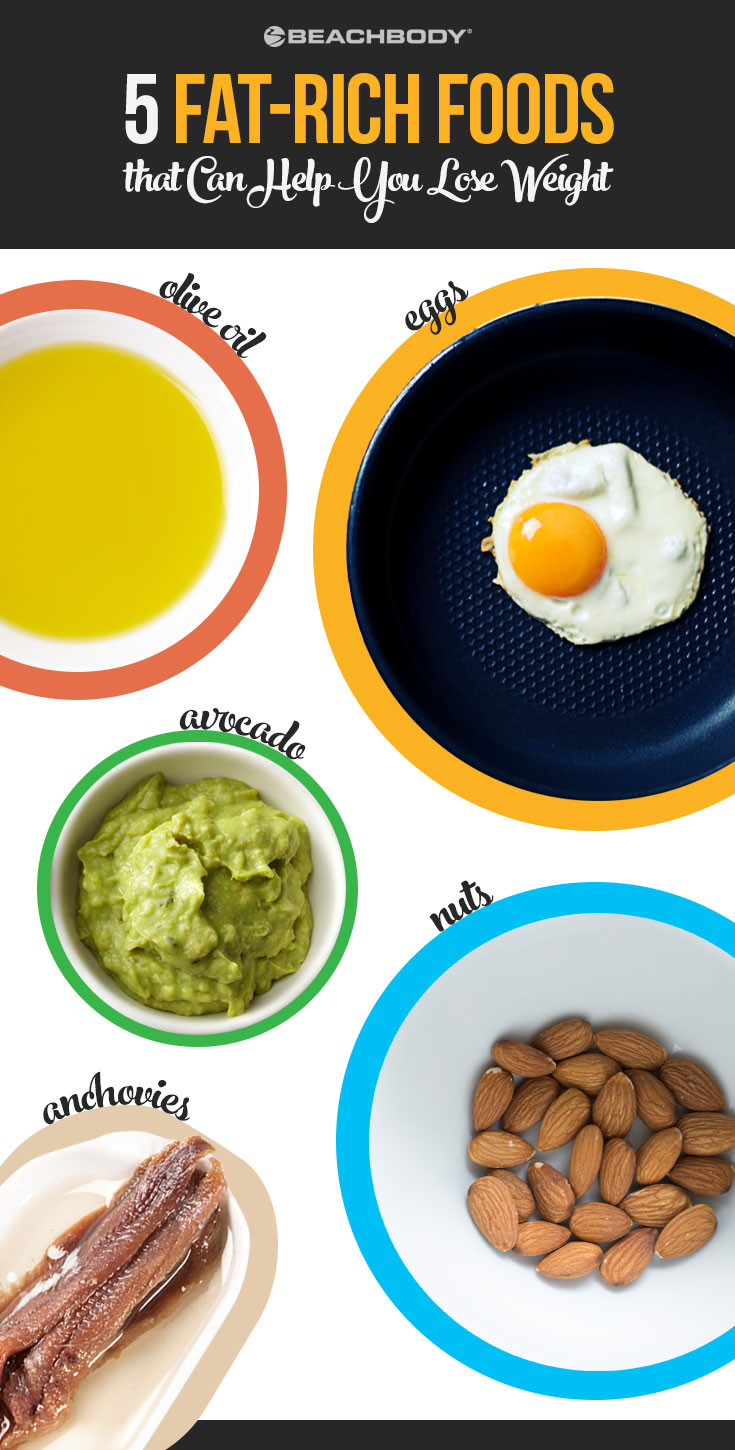These Fat-Rich Foods Can Help You LOSE Weight
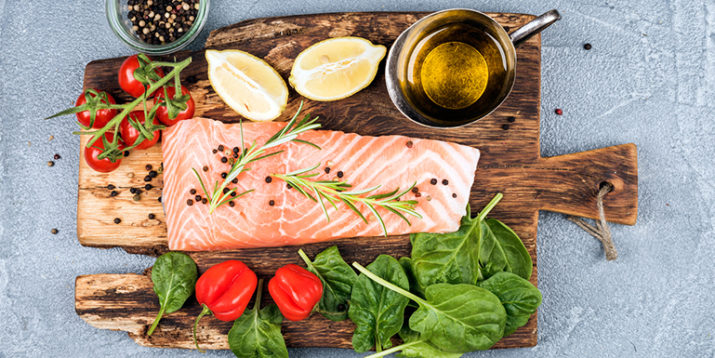
As the outdated logic goes: Gram for gram, fat has more than twice the calories of protein or carbohydrates, and eating too many calories leads to weight gain, therefore, people should eat less fat. Right?
If only life were so simple.
While calories are still king for short-term weight loss, sustainable, long-term weight loss is more complex. According to commentary in The Lancet Diabetes and Endocrinology, long-term weight loss depends on how the body processes and interacts with food and all its nutrients, not just its calories.
How else could moderately higher-fat diets like the Mediterranean diet (42 percent fat, mostly from olive oil and nuts) continue to be linked to lower weight and waist circumference (aka belly fat)? In a 2015 Harvard University meta-analysis of more than 50 clinical trials, low-fat diets didn’t perform any better than higher-fat diets for long-term weight loss.
Given the option, wouldn’t you rather include delicious, healthy fatty foods for a lifetime of weight maintenance? Here are five foods to work into your meals and snacks that can help you do that.
1. Anchovies
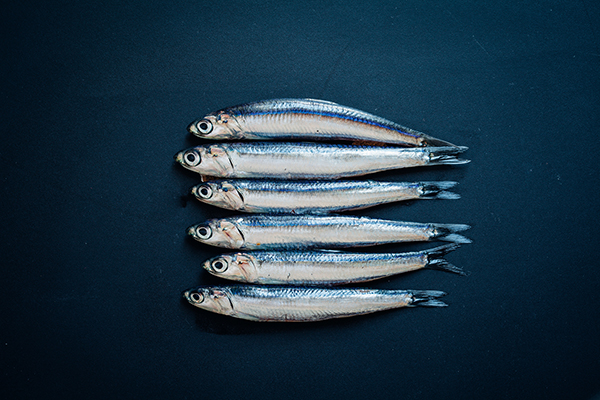
Many chefs’ secret ingredient, the humble anchovy adds so much savory flavor to dishes without being overly fishy. They are small fatty fish that provide omega-3 fats, a type of polyunsaturated fat that American’s don’t get enough of.
Omega-3 fats are an important part of keeping cell membranes strong and healthy. And since the bones are small and edible, anchovies are a surprisingly good source of calcium for strong bones and teeth. A staple in many Mediterranean-style dishes from sauces to fish stews, anchovies are the little fish with a big impact.
Other delicious, decadent yet healthy, fatty fish to consider are salmon, herring, mackerel, rainbow trout, and sardines. Salmon is one of my favorites because of its large, luxurious flakes, low- to non-existent mercury levels, and how forgiving it is for the home cook — it’s really hard to over-cook a big, fatty piece of salmon.
2. Avocado
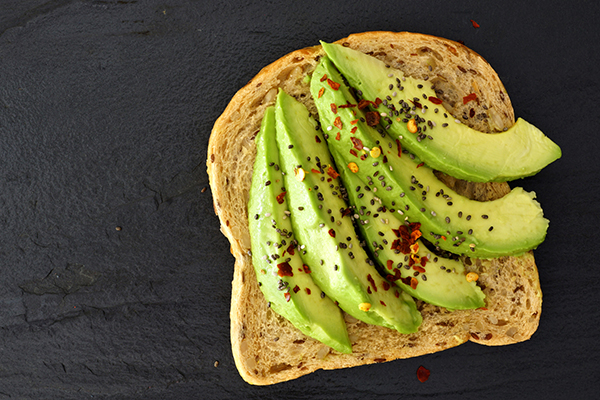
Avocados used to be shunned because of their fat content. Now we know that the monounsaturated fat in avocados is healthy fat, not to mention they contain antioxidants like lutein that give it its signature green color (it’s in higher concentrations in the darker green flesh closest to the peel).
Avocados may also help you feel full, according to a small study published in the Journal of Nutrition. Researchers added about half of a Hass avocado to lunch for 26 overweight adults, and tested how full it kept them for the five hours after eating. They rated their appetite on a visual scale before and after lunch, and the results show that compared to the sad avocado-free control meal, the lunch with added avocado kept participants 23 percent more satisfied, and was 28 percent better at keeping hunger away over the five hours after lunch.
When just looking at the first three hours after the meal, which is when it’s so easy to reach for a snack, the avocado lunch did even better at controlling hunger. Seeing similar studies done with larger groups or over longer timeframes could be interesting — and I don’t think they’d have any trouble getting people to volunteer with avocados on the menu!
3. Olive Oil
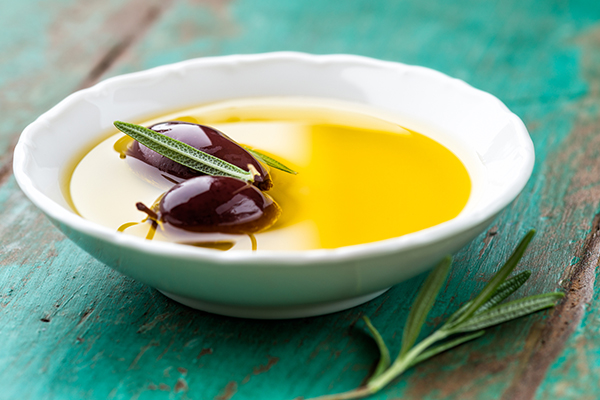
Olive oil is the main fat used for cooking in the Mediterranean diet. While about 40 percent of this diet comes from fat, this way of eating could be a viable path to weight loss and weight maintenance. In a year-long study published in the Journal of the American College of Nutrition, Mediterranean diets high in olive oil led to significant drops in weight and waist circumference.
While a low-fat diet also led to weight loss, the study showed that a Mediterranean diet can be an effective alternative. As an added bonus, the Mediterranean diet respects and celebrates traditional ways of eating, which helps preserve culture.
However, buyer beware: a UC Davis study found that most (73 percent) of the most common olive oil brands sold in the U.S. were diluted with other oils (e.g. soy, corn, canola).
The California Olive Oil Council offers an authenticity certification that you can look for on bottles of olive oil at the grocery store. The Council’s testing standards are more rigorous than international ones. The North American Olive Oil Association offers a separate seal of authenticity for imported olive oils. You can also check the harvest year on many bottles of olive oil — always buy from the most recent year available.
4. Whole Eggs
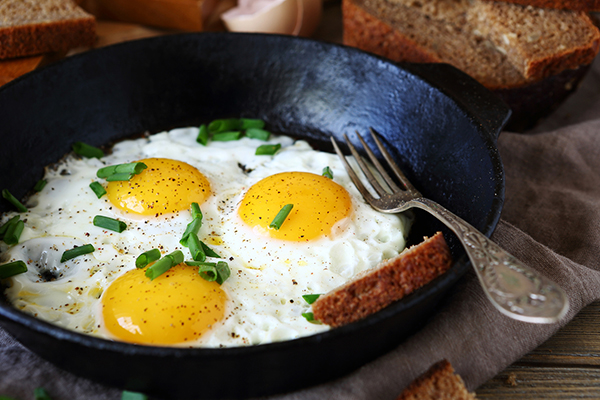
Eggs offer satiating protein, healthy fats, and is one of the few commonly eaten food sources of vitamin D, but only if you eat the whole egg, as many of the nutrients are in that golden yolk.
Clinical trials also suggest including eggs can help with weight management: One such study published in the International Journal of Obesity compared typical breakfast foods — eggs versus bagels. The study included a 340-calorie breakfast — either eggs or bagels — for adults either on a calorie-restricted diet or not. When participants were already cutting back on calories, eggs seemed to give them a boost —they lost 65 percent more weight. However, without the calorie controls, it was hard to see any effect.
The take-home message is to watch your overall intake, and that an egg breakfast may just serve your weight-loss goals better than a bagel. So if you want to, go ahead and put an egg on it.
5. Nuts
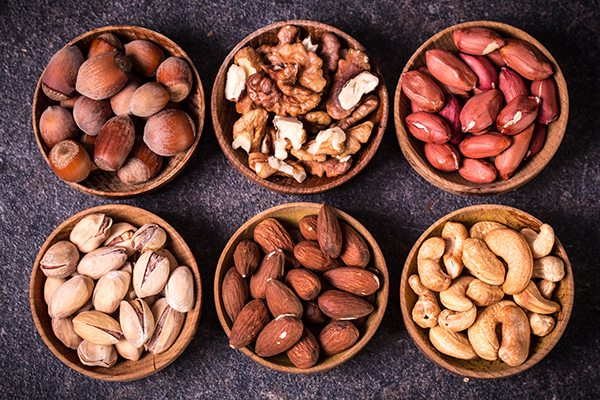
Nuts are heart-healthy, but big data from U.S. nutrition surveys suggest they’re weight-friendly, too. In an observational study reviewing past eating habits for 14,386 people, those who ate at least 1.75 ounces of nuts per week tended to have a lower body-mass index and waist circumference. The study included several kinds of nuts: almonds, Brazil nuts, cashews, hazelnuts, macadamias, pecans, pine nuts, pistachios, and walnuts.
In a one-year clinical trial, subjects assigned to eat a Mediterranean diet with added nuts had a reduced waist circumference, too. The even better news is that this study did not restrict calories, which means these results are a lot more meaningful for everyday life.
The Bottom Line
Don’t be afraid of fatty foods, but do choose wisely. It’s not as simple as opening the floodgates (or your lips, as it were) to all fatty foods. It’s about eating a variety of super nutritious foods, including those with healthy fats.
